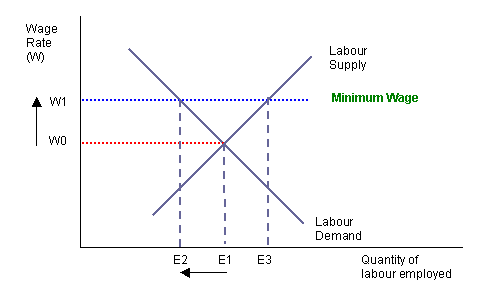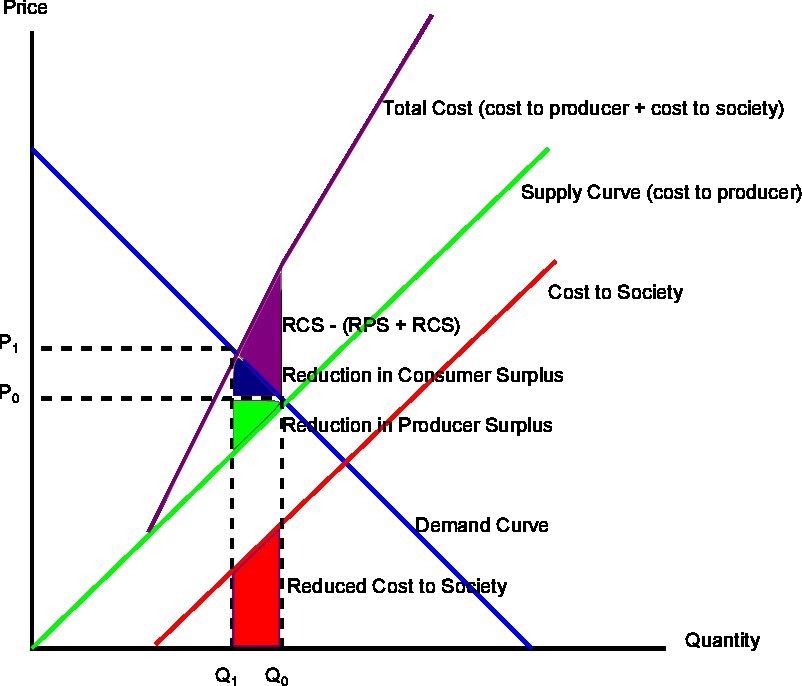Free Markets What s The Cost
Post on: 16 Март, 2015 No Comment

The U.S. economy is essentially a free market economy — an economic market that is run by supply and demand — with some government regulation. In a true free market, buyers and sellers conduct their business without any government regulation, but there is a continuing debate among politicians and economists about how much government regulation is necessary in the U.S. economy. (For more, read Economics Basics .)
Those who want less regulation argue that if you remove government restrictions, the free market will force businesses to protect consumers, provide superior products or services, and create affordable prices for everyone. They believe that the government is inefficient and creates nothing but a big bureaucracy that increases the cost of doing business for everyone.
Those who argue that government regulations are necessary to protect consumers, the environment and the general public claim that corporations are not looking out for the public’s interest, and that it is precisely for this reason that regulations are required.
In this article, we consider the pros and cons of a completely free market versus a market with some government regulation.
It’s a Free Market Economy, Man
In its purest form, a free market economy is when the allocation of resources is determined by supply and demand, without any government intervention. (To learn more about supply and demand, see Economics Basics: Demand and Supply .)
Supporters of a free market economy claim that the system has the following advantages:
- It contributes to political and civil freedom.
- It contributes to economic freedom and transparency.
- It ensures competitive markets.
- Consumers’ voices are heard in that their decisions determine what products or services are in demand.
- Supply and demand create competition, which helps ensure that the best goods or services are provided to consumers at a lower price.
Critics of a free market economy claim the following disadvantages to this system:
- A competitive environment creates an atmosphere of survival of the fittest. This causes many businesses to disregard the safety of the general public to increase the bottom line.
- Wealth is not distributed equally — a small percentage of society has the wealth while the majority lives in poverty.
- There is no economic stability because greed and overproduction cause the economy to have wild swings ranging from times of robust growth to cataclysmic recessions.

When Free Markets: Triumphs and Tribulations
There are several historical examples that suggest that the free market works. For example, the deregulation of AT&T, which previously functioned as a regulated national monopoly, in the 1980s provided consumers with more competitive telephone rates. Also, the deregulation of U.S. airlines in 1979 provided consumers with more choice and lower air fares. The deregulation of trucking companies and railroads also increased competition and lowered prices.
Despite its successes, there are also several historical examples of free market failure. For example, since the cable industry was deregulated in 1996, cable TV rates have skyrocketed; according to a 2003 report by the U.S. Public Interest Research Group (PIRG), cable rates increased by more than 50% between 1996 and 2003. Clearly, in this case of deregulation, increased competition did not reduce prices for consumers.
Another example of free market failure can be seen in environmental issues. For example, for years the oil industry fought and defeated laws requiring double-hull oil tankers to prevent spills, even after the single-hulled oil tanker Exxon Valdez spilled 11 million gallons into Prince William Sound in 1989. Similarly, the Cuyahoga River in Northeast Ohio was so polluted with industrial waste that it caught fire several times between 1936 and 1969 before the government ordered a $1.5 billion cleanup. As such, critics of a free market system argue that although some aspects of the market may be self regulating, other things, such as environmental concerns, require government intervention. (Find out how being environmentally friendly can benefit a company in Five Companies Leading The Green Charge .)
Law and Order: The Regulated Economy
Regulation is a rule or law designed to control the behavior of those to whom it applies. Those who fail to follow these rules are subject to fines and imprisonment and could have their property or businesses seized. The United States is a mixed economy where both the free market and government play important roles.
A regulated economy provides the following advantages:
- It looks out for the safety of consumers.
- It protects the safety and health of the general public as well as the environment.
- It looks after the stability of the economy.
The following are disadvantages to regulation:
- It creates a huge government bureaucracy that stifles growth.
- It can create huge monopolies that cause consumers to pay more.
- It squashes innovation by over-regulating.
Some historical examples that show how well regulation works include the ban on DDT and PCBs, which destroyed wildlife and threatened human health; the establishment of the Clean Air and Water Acts, which forced the cleanup of America’s rivers and set air quality standards; and the creation of the Federal Aviation Administration (FAA), which controls air traffic and enforces safety regulations.
Several historical examples of regulatory failures include:
- In response to the Sarbanes-Oxley Act of 2002 (SOX), an act written in response to accounting scandals, many companies decided it was too cumbersome to list in the United States and decided to do their initial public offerings (IPOs) on the London Stock Exchange (LSE) where they didn’t have to worry about Sarbanes-Oxley.
- The coal industry has so many regulations that it is more profitable to ship coal overseas than to sell it domestically.
- Many labor and environmental regulations force businesses to move jobs off shore, where they can find more reasonable regulations.
Finding a Balance
There is a delicate balance between an unregulated free market and a regulated economy. The following are some examples in which it appears that the U.S. has struck a good balance between the two:
- The Federal Deposit Insurance Corporation (FDIC) was created after the Great Depression. The FDIC insures depositors’ money so that even if banks fail, the depositors won’t lose their deposits.
- The Securities and Exchange Commission (SEC) regulates the stock markets, ensures honest disclosure on all stock transactions and fights insider trading.
- The ban on CFCs prevents the destruction of the ozone layer.
Several ways in which the economy has become out of balance as a result of deregulation include:
- The deregulation of the savings and loan (S&L) industry in 1982 led to fraud and abuse, causing the federal government to spend $500 billion to stabilize the industry after 650 S&Ls went under.
- Improperly trained crews led to the near meltdown of a nuclear reactor at Three Mile Island. which released radiation into the air and water. Gordon MacLeod, the secretary of state for Pennsylvania, was fired for voicing his concerns about the lack oversight of the nuclear industry and the inadequate preparedness of the state to respond to such emergencies.
- The lack of adequate regulation of silicon breast implants led to a situation in which manufacturers knew that the implants leaked but continued to sell them anyway, leading to a settlement of $4.75 billion to 60,000 women affected in 1994.
Conclusion
Free market economics aren’t perfect, but neither are completely regulated economies. The key is to strike a balance between free markets and the amount of government regulation needed to protect people and the environment. When this balance is reached, the public interest is protected and private business flourishes.














